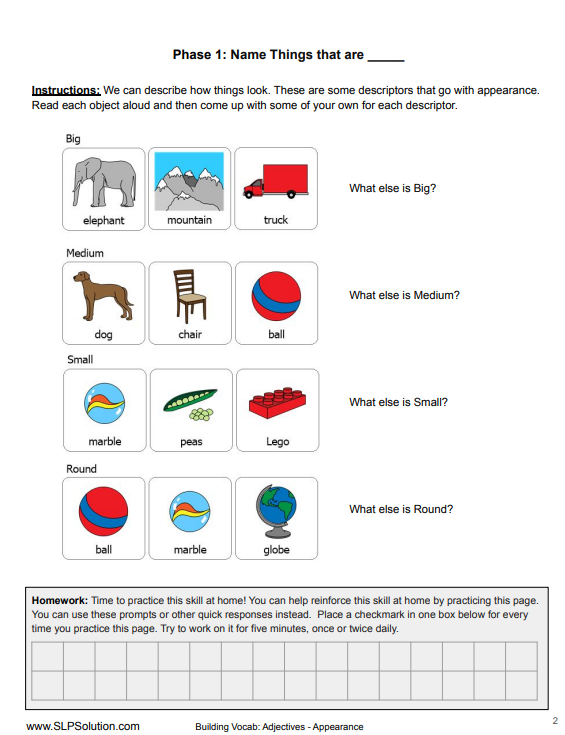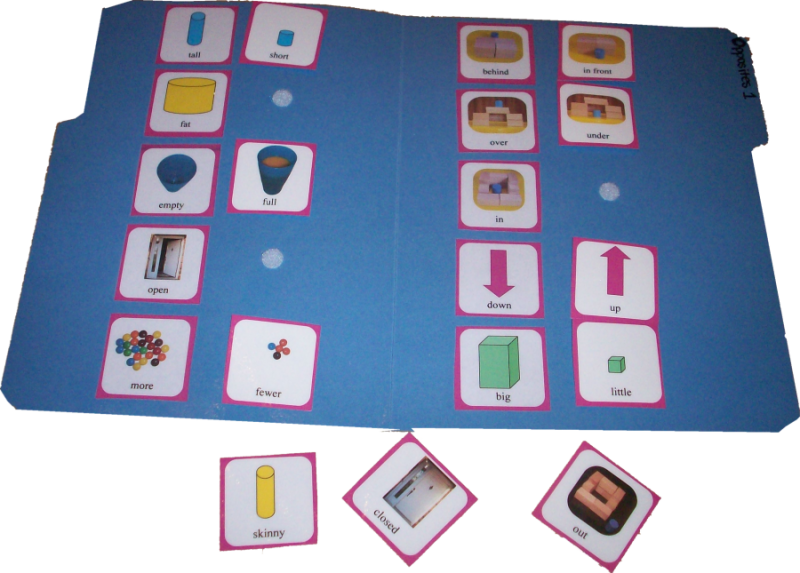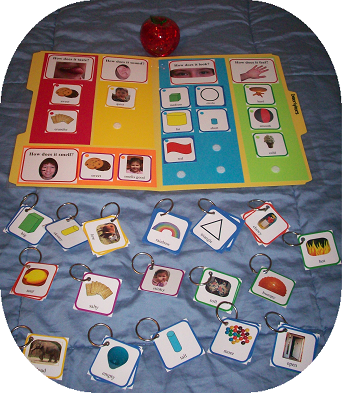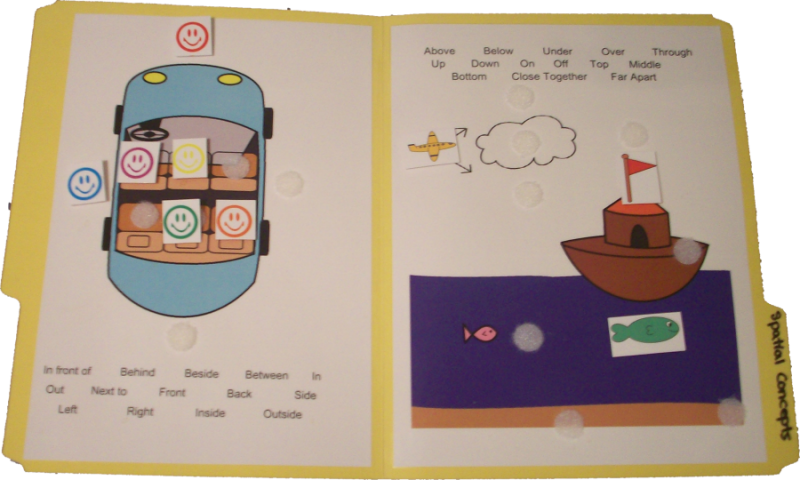Teaching Adjectives to Children:
Activities and Worksheets for Helping Kids Learn Adjectives
Descriptors are an important part of our vocabulary. They are the words that describe other words. These can be adjectives (words that describe nouns) or adverbs (words that describe verbs). We use these throughout our everyday conversation to convey information or add interest to what we’re talking about.
Many children with speech and language delays have difficulty with these words and may not use them in their conversational speech. This can make their message hard to follow or become uninteresting. These steps for teaching adjectives will help your child or students who have trouble using adjectives and other descriptors appropriately.
How to Teach Adjectives to Children:
1. Choose an Adjective to Teach
The first thing you will need to do when teaching adjectives is to choose one concept to work on. The tendency is to try to teach several related concepts at the same time, such as all of the colors, or all of the shapes. However, this can be very confusing to a child with a language delay. You will want to start with one very simple concept, such as one color, one shape, big (but not big and little), etc.
| Descriptor(s): | Age of Mastery: |
| Up and Down | 2 years |
| One/Many, Sizes (small, medium, big) | 3 years |
| Different, Colors (red, blue, etc.) | 4 years |
| Superlatives (big, bigger, biggest), Time Concepts, Thin, Whole, First, Middle, Last | 5 years |
| Opposites, Left/Right, Number Concepts | 6 years |
Take a look at this list of concepts and the ages associated with them. Circle the ones that your child is not able to use correctly at this time. Choose one of these concepts, preferably one that is toward the top of the list. If one of the things you chose was a group of concepts, like “colors” or “shapes”, choose one particular concept from that group. Make sure that you are specific with which concept you will target.
2. Model the Adjective
Now that you have chosen your concept, it’s time to model that concept for your child. Now, when I say “model”, I don’t mean you have to be Vanna White, though if that gets your child more interested you’re more than welcome to put on a sparkly dress and hold it up! What I mean is that you will be showing your child the concept over and over again.
Find a few different ways to show your child the concept you are working on. For example, if you chose a color, get out many things of that same color. Or, if you chose a size concept, get out many things that represent that size. Now, here comes the tricky part, you must also get some non-examples. A non-example is something that does not fit the concept and you want it to be as far from the concept as possible. So, if you have several examples of things that are green, you will also want some non-examples that are red, yellow, or orange. These are very dissimilar colors to the one you are trying to present. Or, if you chose “big” as your concept, you could get some non-examples of things that are little. Make sure they are much smaller than the big examples you have. Try to get your non-examples to be the same type of object as your examples. So, if you have a big ball, try to find a small ball to compare it to, instead of a small car. This will help your child see that the only difference between those two objects is the size (or whatever concept you’re targeting).
Next, show your child that concept over and over again while saying the name of the concept (such as the color or shape name). When you pick up a non-example, say “not ____” and use the concept word again. So you may have objects that are green and some that are “not green”. Don’t use the other color words or other concepts just yet, we want to focus on just the target word. Also, point out the concept when you see it other places as well, such as all of the green things on your walk.
3. Following Direction with the Adjective
Now that you have bombarded your child with the concept until you’re blue in the face, we want your child to start following directions using the concept. Keep in mind, this is easier than having your child say the concept out loud, so make sure you take these steps in order.
Get out the examples and non-examples that you used in the last step. Model the concept for your child a few more times as a reminder. Then, ask your child to follow a direction with the concept. You can say “give me the green ball” or “get the big car”. Make sure you exaggerate the target word in the sentence so she knows which one to focus on. Then, pause for a moment to see if your child follows the direction on her own.
If your child does follow the direction, give her feedback on whether or not she found the correct object. If she did, say “yes, you found the green ball!”, but if she didn’t you can say “oh, not green. This ball is not green. Where’s the green one?” Then you can help her find the correct one. If your child does not attempt to follow the direction, help her follow the direction by moving her hand to pick up the correct object and then praise her for it, even though you had to help her.
Keep doing this over and over again with different directions and different objects so your child begins to understand the concept in many different ways.
4. Yes/No Questions about the Adjective
Once your child can follow simple directions with the concept, we want him to answer yes/no questions about the concept.
Get out your examples and non-examples again and this time hold up one of the objects and ask “is this ___?” using the target concept. Make sure you have the non-examples present so he has something to compare it to. For example, if you says “is this big?” but there’s nothing any smaller to compare it to, the term “big” kind of loses its meaning.
If your child is struggling, try giving him some examples. Hold up an object that is an example of that concept and say “is this ___?” Then, immediately say “yes, this is ___”. Then, hold up a nonexample and ask the same question again. Then, immediately say “no, this is not ____”. Do this a few times and then give your child a chance to answer. You can also bring in another child or a sibling to answer the question a few times as well.
5. Say the Adjective Out Loud
Now that your child is able to follow directions with the concept and answer questions about it, you’re finally ready to start having your child say the concept word out loud.
This time when you get out your examples and non-examples, you will want to ask your child a question that will encourage her to say the concept word out loud. If you chose a color, you could say “what color is this?”. Or, if you chose a texture you could say “how does it feel?”. Think about the question you want to ask ahead of time. Hold up one of your examples (though have your non-examples there as references) and ask your child the question.
You may have to model the correct answer for her at first but eventually she should be able to start using the word on her own. If she still needs prompts, try saying just the first sound or first syllable of the word at first to see if she can finish the word for you. Then, you can just try mouthing the first sound.
Then, you should be able to fade your prompting to not needing to cue her at all. Do this with the examples that you have been working with but also try this when you see the concept somewhere else. For example, at the store, you could find things that are the target color and say “what color is this?”.

About the Author: Carrie Clark, MA CCC-SLP
Hi, I’m Carrie! I’m a speech-language pathologist from Columbia, Missouri, USA. I’ve worked with children and teenagers of all ages in schools, preschools, and even my own private practice. I love digging through the research on speech and language topics and breaking it down into step-by-step plans for my followers.
Connect with Me:










When teaching adjectives in this 5 step process, how often are you doing so? Is this something you do for a day, three days and then move onto another concept? Then how soon do you keep revisiting the ones you already reviewed?
I like to stick to one adjective until the child has mastered it and then is using it functionally in his daily life. For some children this only takes a couple sessions and for some it takes much longer. It depends on the child. Then, I will remind the child of that adjective any time that the opportunity comes up in conversation but they forget to use it.